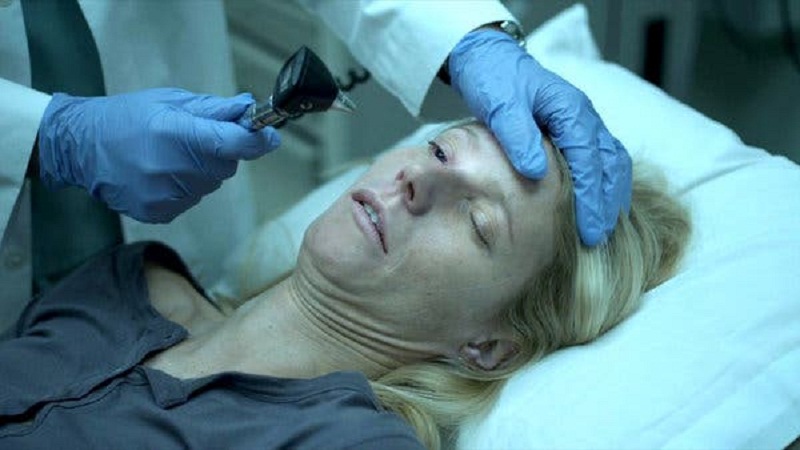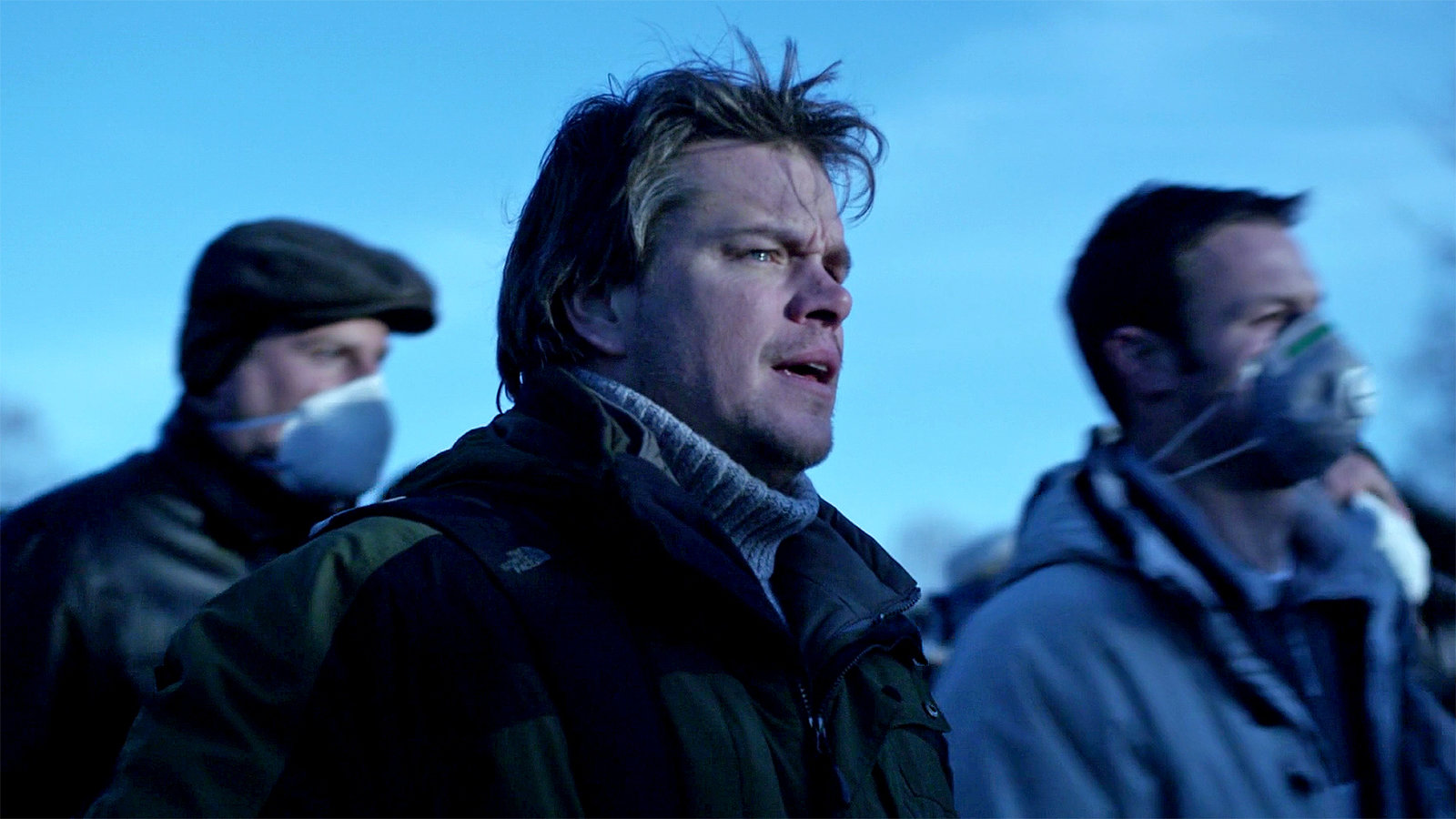Until now, every time someone referred to an apocalyptic pandemic event, most of us were hardwired to think about the good old zombie flicks like ‘I Am Legend’ or ‘28 Days Later.’ However, now, since the whole scenario feels gravely real because of the outbreak of Covid-19, many movie lovers are finding their way back to the decade-old thriller—’Contagion.’ Back in the day when Scott Z. Burns was writing the film’s screenplay, he wanted it to feel real and did a lot of scientific research for this. So after knowing this, it comes as no surprise that the film has some stark similarities with the current situation.
Throughout its runtime, with a mildly convoluted yet intriguing storyline, the film portrays the perspectives of several different individuals who experience a global meltdown in the aftermath of the outbreak. However, apart from dropping a few clues here and there, the film waits until its climax to reveal the inception of the pandemic. Before we explain the ending of the film, let’s first understand how much of it is based on actual science.
The Actual Science Behind Contagion

Apart from gaining attention for its star-studded cast, ‘Contagion’ was also appreciated by most critics back when it first premiered. However, over the years, the film was somewhat forgotten, until recently, it suddenly started trending on iTunes, Google, and even Twitter. The reason behind this is that everything from the movie’s depiction of the virus to the social impact that it creates is quite relatable for people today. So it’s pretty obvious that the film was backed up with a whole lot of research. According to the production notes of the film, many world-class experts in the field of infectious diseases were involved and all of them carried out months of research to ensure that Soderbergh’s plot had an authenticity to it.
Out of all the experts involved, W. Ian Lipkin, MD, director of the Center for Infection and Immunity at Columbia University and a professor of epidemiology, neurology, and pathology, was one of the pivotal figures who stuck around during the film’s shooting for a very long time and helped the filmmakers in every possible way. It features several scenes in which experts can be seen working in high-level labs, using scientific terminologies, and even performing complex procedures. Most viewers would remember the graphic scene in which two doctors perform an autopsy on Beth. For the most part, everything from the lab equipment to the medical procedures is credible as most of it was done under Ian Lipkin’s guidance.

Moreover, even the pathogen shown in the film was specifically designed by Lipkin as a fictitious but biologically possible virus. It apparently had a “reality-based scientific lineage akin to the existing Coronavirus,” but is just far more aggressive and lethal. Other aspects of the film in which social structures are broken down, people are quarantined, and even small details like the emphasis on washing one’s hands and resorting to fist bumps instead of shaking hands, clearly show how accurate the film is.
In an interview with Vulture, the writer of the film, Scoot Z. Burns said “People I’ve never met have done everything from accuse me of being able to travel to the future, to having access to God, to being a member of the Illuminati. But mainly it’s just been friends and people with kids asking if I have any insights into what I think is going on and what’s going to happen next.” Considering the scientific significance of the movie and its similarities with the present scenario, these accusations are not at all surprising.
Plot Summary
In the opening scene of the film, Gwyneth Paltrow‘s character, Beth, can be seen at an airport bar, returning home from a business trip to Hong Kong and Macau. Soon the camera begins to take abutting shots of everything her hands come in contact with, hinting on what is about to happen. The next thing you know, Beth is dead, so is her son, and the virus that infected her is out there spreading all over the world. When the seriousness of this situation actually hits the experts, it’s already too late to react and the infection is already a pandemic.
While medical researchers, scientists, and doctors work endlessly to find a cure, a conspiracy theorist named Alan (Jude Law) vents his frustration to his followers and misguides them into believing that the virus had been bio-engineered by the government and also has a secret cure. In the meantime, streets all over the world are deserted and while most people try to quarantine themselves, others aggressively start riots and raid medical stores to get their hands on the medicine that could potentially cure the illness. In the end, things do end well, but the damage left behind will probably take years to mend.
The Ending: The Origins of the Virus

Both literally and metaphorically, ‘Contagion’ leaves no room for you to breathe as in its first few moments itself, it reveals the seriousness of the situation. As it proceeds, the number of casualties just goes higher and to startle you with the fact that the illness spares no one, the film ruthlessly eradicates some of its pivotal characters. But after heavy commentary on human nature and the sinister intentions of a conspiracy theorist/ influencer, the film rests for a fairly optimistic ending. The viral infection, later dubbed as MEV-1, is finally cured after the consistent efforts of a government-funded doctor.
The medicine is distributed to different parts of the world and as one would expect, this, too, leads to a lot of political drama, but the situation slowly begins to settle down a little. To have a fair distribution of the drug, the government also introduces a lottery-based system, through which, vaccines of all citizens are scheduled based on their birthdays. While the world still seems to succumb in the aftermath of the outbreak and so do the people as individuals, a ray of hope can be distantly seen and several lives are saved.
In the next scene, a flashback reveals the origins of the virus. At ground zero—Hong Kong, a truck bulldozes over a banana tree that was infested with bats. While most of the bats fly off, one of them returns to take a piece of a banana from the same tree. The bat then flies off to a barn nearby and drops the banana there. Soon after this, a pig ends up eating it and is later sold to the chef of the casino that Beth had visited during her business trip. In the next scene, the chef of the casino can be seen handling the pig when he is suddenly called outside to greet the guests. He simply wipes his hands on his apron and heads outside to pose for pictures and if you can recall well, he even holds Beth’s hands. This is how the virus from the pig gets passed on to Beth (Gwyneth Paltrow), making her patient zero.

This goes back to the scene in the initial moments of the film where Dr. Hextall (Jennifer Ehle) claims that the virus contains strains from the DNA of both pigs and bats. Also, the scene in which the banana tree is bulldozed by the truck, the logo, “AIMM Alderson”, can be seen on it. In one of the initial scenes of the film, Beth can be seen with a file that has the same logo on it, suggesting that she is an employee of the same company. Maybe this has nothing to do with the overarching plot or maybe it’s just a twisted depiction of karma.
Read More: Best Disease Movies of All Time

